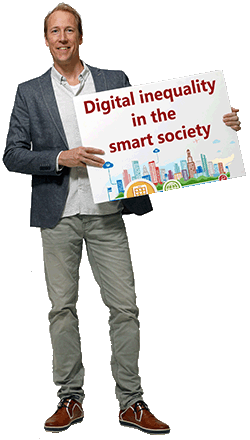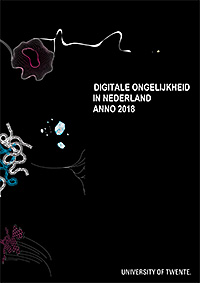Overview of the book (if interested, request a digital copy by mail)

The first chapter of this book defines digital skills as a crucial phase in the appropriation of digital technology. A framework of six digital skills is introduced: two medium-related skills consisting of operational skills (technical skills to command digital media) and formal skills (browsing and navigating, above all on the web) and four content-related skills consisting of information skills (the ability to search, select and evaluate information in digital media), communication skills (the ability to communicate on mostly the Internet), content creation skills (the ability to generate content) and strategic skills (using a digital medium as a means for a particular personal or professional goal). Such contemporary digital skills are just the latest media skills people have developed. Chapter 1 provides a snapshot of skills in history to show that an expanding and cumulative number of skills have appeared and that an ever larger section of the population requires these skills.
After making a firm basis of the digital skills subject and proposing a skills framework, in Chapter 3 we discuss the social contexts of the use and skills of digital media and whether digital skills are actually a problem for people and society. We will list a number of fields of participation in society (e.g., economy, politics, social, etc.) to describe the impact of digital skills. Then, the problem of a lack of digital skills can be better understood. Questions such as ‘Are unequal digital skills not simply a reflection of social inequality in general?,’ ‘Have print media not shown the same inequalities, for example unequal skills in reading and writing proficiency?,’ ‘Are the traditional media not unavailable anymore for every information and communication needs imagined?’ and ‘Have people with a lack of digital skills not sufficient support by other people around them?’ will be addressed.
After discussing the importance of digital skills, in the following Chapter 4 the extent of the problem is estimated from empirical evidence. The proposed digital skills framework is applied in performance tests and surveys to determine digital skill levels of the population at large. What are the current levels of the Internet skills of our framework among the population? All six types of skills will be carefully examined. Which social categories of the population show higher or lower levels of these skills?
Chapters 5 and 6 discuss the main solutions of the digital skills problem that arises from Chapter 4. The main solutions are (1) improvement of technology design by making digital media more accessible or usable, and (2) educational solutions. Chapter 5 is primarily addressed to designers and producers of technology. How are they able to improve digital media? Is it possible to support users in intuitive ways so they do not have to learn much digital skills first? This would be the preventive solution. In Chapter 6, the cure after less than perfect or unavoidable complex technology is offered: educational solutions of all kinds. This chapter will primarily appeal to teachers, coaches and human-resources officers and educational institutions. It will be argued that formal education, computer classes and training are not the most frequently used way to learn digital skills. These are informal education by learning by doing, trial and error, self-study and asking for assistance by others around. What are the advantages and disadvantages of formal and informal education in learning skills? What are the solutions currently practiced in regular schooling, adult education and distance education? What educational tools and styles are offered for disadvantaged groups such as disabled, illiterates, elderly and migrant users?
The final Chapter 7 summaries the conclusions of the book and explores policy perspectives. Evidently, this chapter addresses policy makers, but also the public opinion in general. Policy makers are governments, businesses, educational institutions and organizations of consumers and digital media users such as support services and citizen initiatives. In this chapter an overview is listed of most currently available strategies and instruments for digital skills improvement, including the actors supposed to use these instruments.





